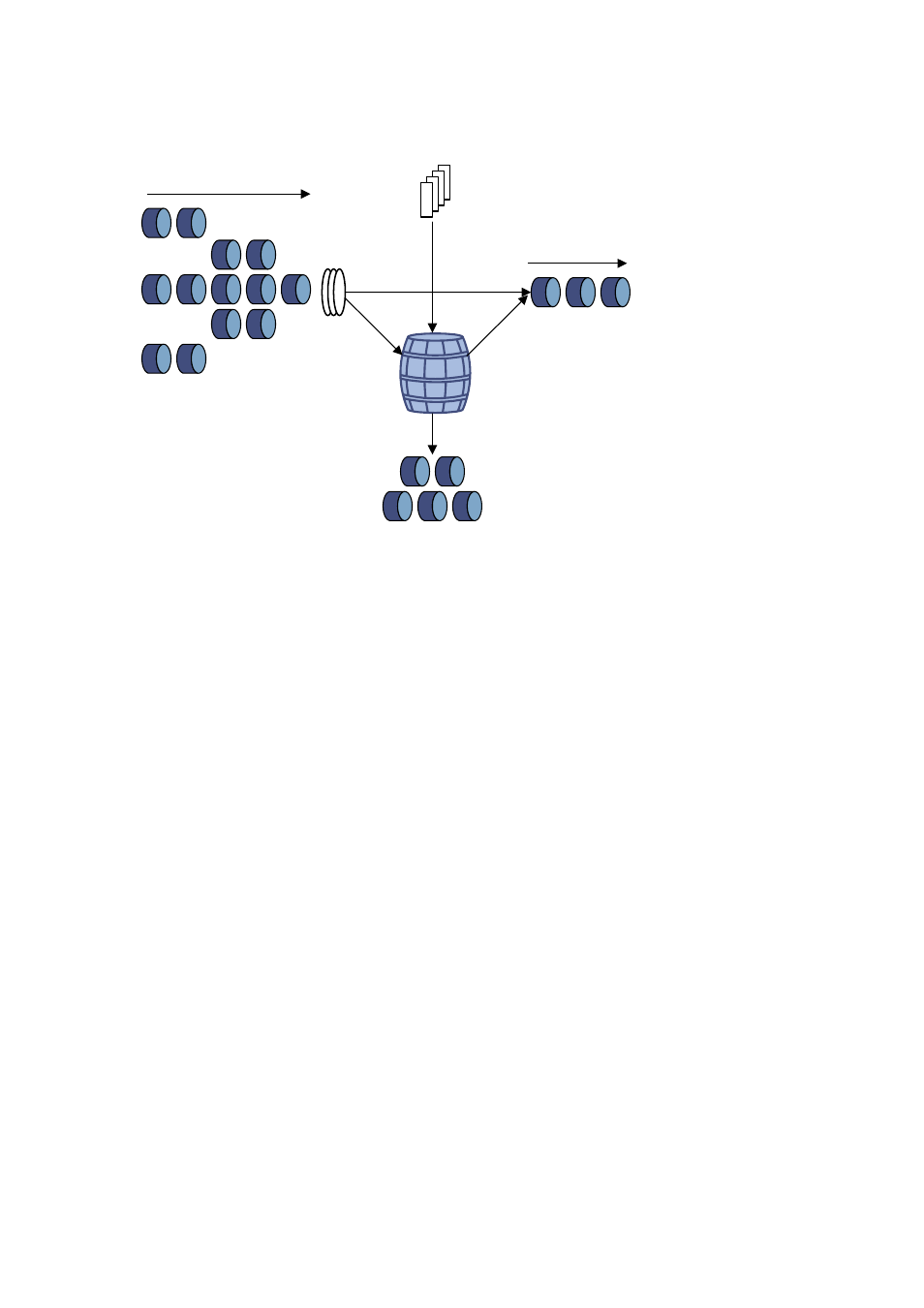H3C Technologies H3C WX3000 Series Unified Switches User Manual
Page 353

37-9
Figure 37-5
Evaluate the traffic with the token bucket
Token bucket
Drop
Packet
classification
Packets to be sent
through this port
Continue to send
Put tokens in the bucket at the set rate
Evaluating the traffic with the token bucket
When token bucket is used for traffic evaluation, the number of the tokens in the token bucket
determines the amount of the packets that can be forwarded. If the number of tokens in the bucket is
enough to forward the packets, the traffic is conforming to the specification; otherwise, the traffic is
nonconforming or excess.
Parameters concerning token bucket include:
z
Average rate: The rate at which tokens are put into the bucket, namely, the permitted average rate
of the traffic. It is generally set to committed information rate (CIR).
z
Burst size: The capacity of the token bucket, namely, the maximum traffic size that is permitted in
each burst. It is generally set to committed burst size (CBS). The set burst size must be greater
than the maximum packet length.
One evaluation is performed on each arriving packet. In each evaluation, if the number of tokens in the
bucket is enough, the traffic is conforming to the specification and you must take away some tokens
whose number is corresponding to the packet forwarding authority; if the number of tokens in the bucket
is not enough, it means that too many tokens have been used and the traffic is excess.
Traffic policing
The typical application of traffic policing is to supervise specific traffic into the network and limit it to a
reasonable range, or to "discipline" the extra traffic. In this way, the network resources and the interests
of the operators are protected. For example, you can limit HTTP packets to be within 50% of the
network bandwidth. If the traffic of a certain connection is excess, traffic policing can choose to drop the
packets or to reset the priority of the packets.
Traffic policing is widely used in policing the traffic into the network of internet service providers (ISPs).
Traffic policing can identify the policed traffic and perform pre-defined policing actions based on
different evaluation results. These actions include:
z
Discarding the nonconforming packets.